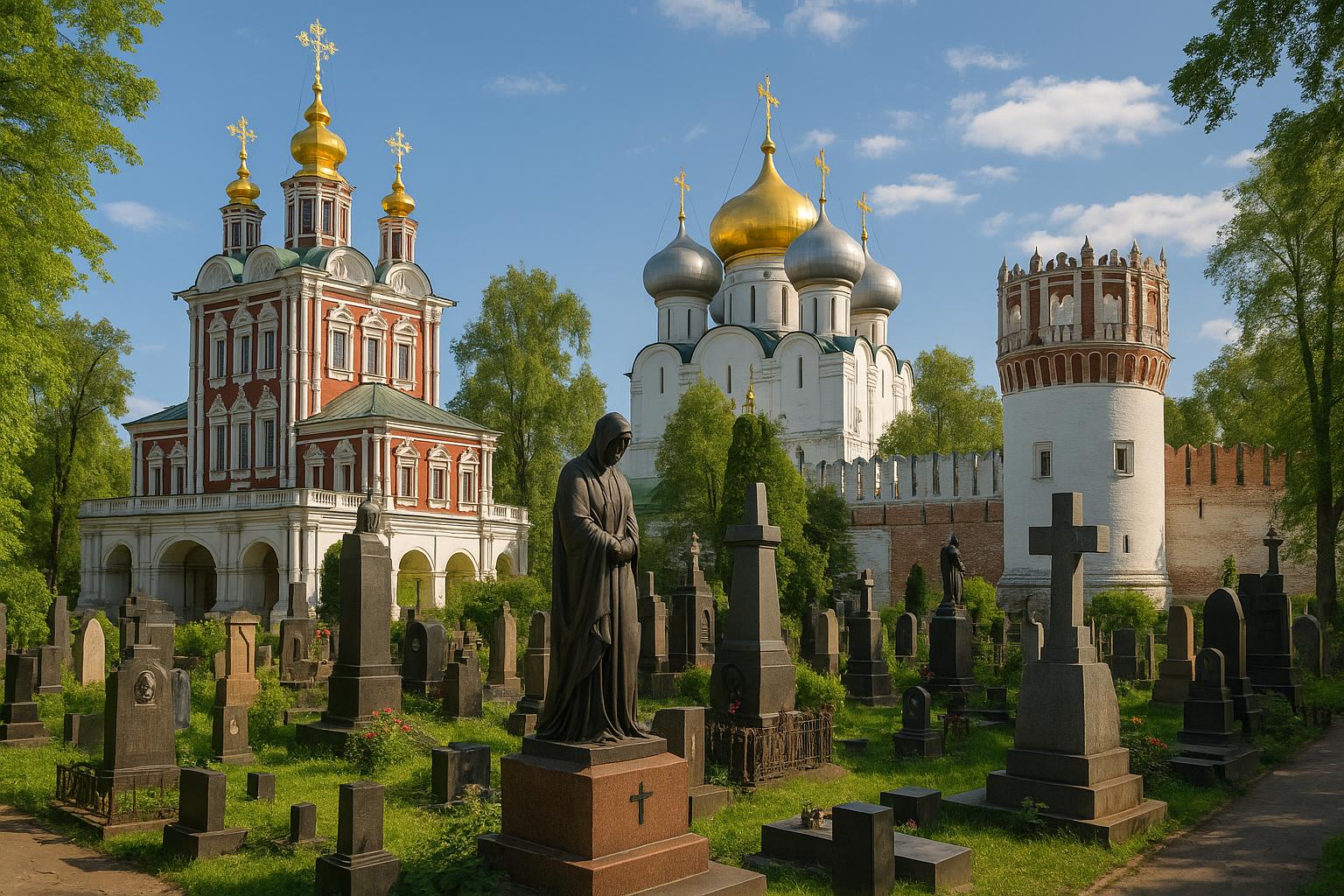Historical Overview of Novodevichy Convent
The Novodevichy Convent, located in Moscow, Russia, stands as a testament to the city’s enthralling historical and architectural heritage. Established in 1524 by Vasili III, the Grand Duke of Moscow, the convent is one of the most important religious landmarks in the city. Serving as a fortified monastery for women, it has experienced a myriad of religious, cultural, and political changes over the centuries. The architectural ensemble of the convent is characterized by its intricate design elements and vibrant hues that are emblematic of the Moscow Baroque style.
Architectural Significance
The architectural allure of the convent is undeniable, with its array of historically significant structures that draw both admiration and scholarly interest. Among these, the Cathedral of the Smolensk Icon of the Mother of God, which was constructed between 1524 and 1525, stands prominently. This cathedral, the earliest surviving structure within the convent walls, is remarkably notable for its five golden domes. Each dome contributes to the cathedral’s grandeur, making it a prominent symbol on Moscow’s skyline. The interior of the cathedral features intricate frescoes, which narrate biblical tales and religious motifs significant to the Orthodox Christian faith.
The convent complex also includes the Northern and Southern Gate Churches, constructed during the late 17th century. These gate churches exemplify the ornate baroque style that flourished during this period. Elaborate decorative elements adorning these structures bear testimony to the period’s architectural innovation and aesthetic sensibilities. The entire convent complex is a harmonious blending of art, architecture, and history that invites contemplation and appreciation.
UNESCO World Heritage Site
In 2004, the Novodevichy Convent received critical recognition from the international community when it was designated a UNESCO World Heritage Site. This prestigious designation underscores the convent’s profound cultural and historical significance, acknowledging its role not only as a religious center but also as a monument preserving unique architectural traditions. UNESCO’s recognition further cements the convent’s place in historical discourse as an indispensable contributor to Moscow’s urban narrative and Russia’s rich cultural legacy. [UNESCO](https://www.unesco.org/) values such sites for their ability to provide insights into the evolution of human culture and architecture.
Role in Russian History
Throughout its history, the convent has been deeply entwined with the narratives of Russian royalty and nobility. It served as both a religious retreat and a complex web of political interactions. The convent often became a sanctuary for high-ranking women, especially those who took monastic vows under challenging circumstances, often influenced by political machinations. A poignant instance of this was Eudoxia Lopukhina’s enforced seclusion. As the first wife of Peter the Great, she was coerced into monastic life and spent a substantial portion of her lifespan within the convent’s confines.
Exploring the Novodevichy Cemetery
Adjacent to the convent, the Novodevichy Cemetery offers visitors another encounter with history. Established in 1898, this burial ground has become one of Russia’s esteemed cemeteries. Over the decades, it has emerged as a venerable place, serving as the final resting place for many of the country’s notable cultural, political, and scientific figures. The cemetery is not merely a place of remembrance but also an open-air museum of sorts, where one can trace Russia’s evolving narrative through the impactful lives of its interred luminaries.
Notable Burials
The cemetery is renowned for its elaborate graves and intricate monuments. Sculptures and artistic engravings adorn these graves, adding to the cemetery’s distinctive character. Among the many luminaries laid to rest here are literary giants such as Anton Chekhov and Nikolai Gogol. Their graves are pilgrimage sites for literature enthusiasts who revere their significant contributions to world literature.
Political figures also feature prominently among the cemetery’s distinguished burials. Individuals like Nikita Khrushchev, known for his role in Soviet politics during the Cold War, and Boris Yeltsin, Russia’s first president following the dissolution of the Soviet Union, rest within these grounds. Their graves serve as enduring reminders of the country’s turbulent political past and the dynamic changes Russia has witnessed through its history.
Visiting Novodevichy Convent and Cemetery
A visit to the Novodevichy Convent and Cemetery provides an immersive experience into Russia’s historical depths and cultural resonances. The site is meticulously preserved, offering a tranquil yet profound connection to the past. Open to the public, it invites both tourists and local visitors to explore and reflect on centuries of rich history. The serene atmosphere and the intricate beauty of the architecture comprise a memorable and educational journey into the heart of Russian heritage.
For those interested in visiting, consulting official resources or authorized travel agencies is advisable. These sources often provide comprehensive visiting hours and guided tours, offering detailed itineraries and expert insights into the site’s substantial heritage. They allow visitors to experience the location’s cultural richness and historical narratives more vividly. Engaging with such resources ensures that a visitor’s journey through the Novodevichy Convent and Cemetery is one of discovery and personal enrichment. For additional visitor information, you may visit the local tourism bureau’s official site.

